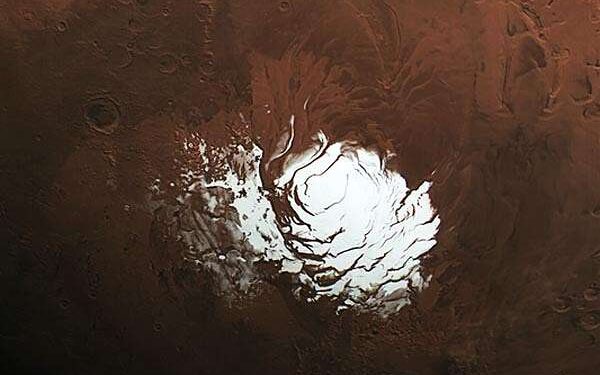
by ESA
Paris, France (ESA) Nov 13, 2025
Travelling up from Mars’s equator towards its north pole, we find Coloe Fossae: a set of intriguing scratches within a region marked by deep valleys, speckled craters, and signs of an ancient ice age.
Earth isn’t the only planet to go through ice ages. A handful have hit our home planet in the last 2.5 billion years, with the most recent – which peaked around 20 000 years ago – taking Earth’s average temperature down to around 7-10C (up to 8C cooler than today).
Ice ages are an entirely separate phenomenon to more recent human-caused global warming. They are part of an ancient geological rhythm primarily caused by changes in a planet’s path around the Sun and the wobble of its rotational axis. During an ice age, ice is more widespread in the form of glaciers and ice sheets, and fluctuating temperatures enable flows of ice to advance and retreat across the globe.
We see the telltale signs of previous ice ages on other planets, too – their impact on modern-day Mars is apparent.
The roughly parallel lines slicing diagonally through Coloe Fossae are a feature created as alternating chunks of ground fell away. Many craters, formed as incoming space rocks collided with the surface, are seen here: large, small, overlapping, irregular, clustered, older and more recent, both well-defined and smoothed away by erosion. On the floors of the valleys and craters is something exciting: patterns of swirling lines that indicate where material flowed during a previous martian ice age.
These patterns reveal the past climate of the Red Planet. They’re known more technically as lineated valley fill (in valleys) or concentric crater fill (in craters). They formed as icy debris flowed slowly across Mars’s surface – reminiscent of glaciers seen on Earth – and became topped by a thick layer of rocky material.
However, this region sits at a latitude of 39N, nowhere near Mars’s north pole (at 90N). How did ice accumulate here?
The answer lies in the pulse of advancing-retreating glaciers during an ancient ice age. Although Mars is currently dry, it has experienced alternating periods of warm and cold, freeze and thaw, throughout its history, driven by changes in the tilt of its axis.
During cold periods, ice spreads from the martian poles all the way down to these mid-latitudes, before retreating back when things get warmer – but leaving telltale signs behind. We see lineated valley and concentric crater fill consistently throughout this latitude band of Mars, suggesting that the entire global climate of Mars changed. This area may have been covered in ice as recently as half a million years ago, when Mars’s most recent ice age ended.
These features – signs of glacial flows, Coloe Fossae, craters – are distinguished geographically, and the split between Mars’s northern and southern terrain is evident in topographic and context maps. This divide encircles the entire planet; in some places it’s sharply marked by a two-km-high cliff, while in others it’s more of a broad, broken-up transitional zone known as Protonilus Mensae.
Signs of lineated valley and concentric crater fill were also highlighted in a previous Mars Express feature on Acheron Fossae.
Related Links
European Space Agency
Mars News and Information at MarsDaily.com
Lunar Dreams and more
